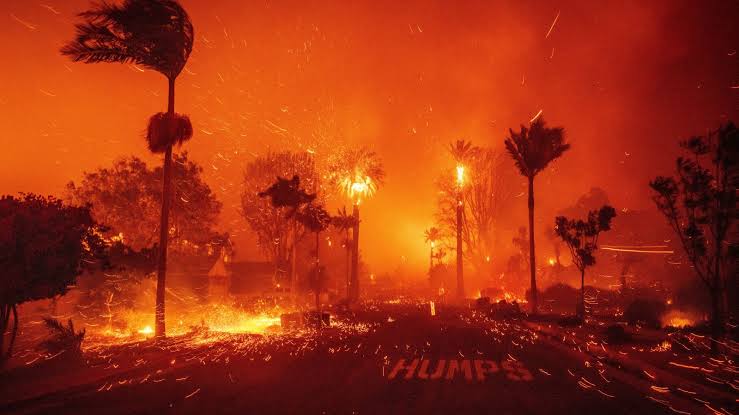California Los Angeles Wildfires LIVE Updates: Hughes Fire Adds to Devastation, Death Toll Rises to 28
The wildfire crisis in California continues to escalate with the eruption of the Hughes Fire on Wednesday morning. The blaze ignited in the rugged mountains north of Los Angeles, rapidly spreading through parched vegetation and sending massive plumes of smoke across the region. This new wildfire compounds an already dire situation, with firefighters battling flames across 45 square miles of Los Angeles County. Among the largest ongoing blazes are the Palisades Fire in Pacific Palisades and the Eaton Fire near Pasadena. Over 50,000 residents in Southern California are now under evacuation orders or warnings.

Current Situation
The death toll from the Los Angeles wildfires rose to 28 as of Thursday, with 22 individuals still missing and thousands displaced. Firefighters are struggling against strong winds, which have reached speeds of 42 mph and are predicted to increase to 60 mph in the coming hours. These gusts, coupled with dry conditions, continue to challenge containment efforts.
Despite these challenges, some progress has been made. Firefighting aircraft and ground crews have achieved partial containment, especially on the southern edge of the Hughes Fire, where flames had been advancing rapidly. However, officials warn that the volatile weather conditions remain a significant threat to both residents and first responders.
The Origin of the Wildfires
The wildfires, which erupted during the first week of January, have been fueled by a dangerous combination of powerful offshore winds and extreme dryness. According to reports from NBC, the Eaton and Palisades fires, which have been burning for over two weeks, have claimed the lives of 28 individuals and destroyed more than 14,000 structures.
Containment levels for the Palisades Fire have reached 68%, while the Eaton Fire is 91% contained. The Hughes Fire, however, remains in its infancy and has already proven to be highly aggressive.
While the exact cause of these fires is yet to be determined, experts point to California’s fluctuating climate patterns—oscillating between prolonged droughts and intense rainfall—as a significant factor in the state’s heightened wildfire risks.
Looking Ahead
Authorities continue to urge residents in evacuation zones to prioritize safety and follow official guidance. Meanwhile, firefighting crews are working around the clock to gain control over the Hughes Fire and prevent further loss of life and property.
As Southern California endures another catastrophic wildfire season, the focus remains on containment efforts, assisting displaced residents, and addressing the underlying environmental factors contributing to this ongoing crisis.


Comments are closed, but trackbacks and pingbacks are open.